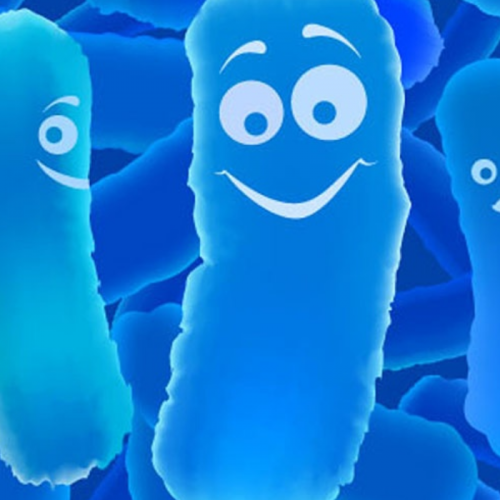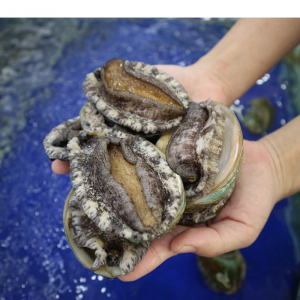
Probiotics in Aquaculture
| Mon, 27 Apr 2020 - 22:28
The use of probiotics is one of the effective immunological control methods in aquaculture, which is considered a complementary, alternative strategy for vaccines and chemicals.
Probiotics in aquaculture act as a nutrient growth promoter, immune stimulant, enhance environmental adaptability, and can be considered as a preventive measure. infectious diseases again.
Some probiotics currently used in aquaculture, including Lactobacillus, Enterococcus, Bacillus, Aeromonas, Alteromonas, Arthrobacter, Bifidobacterium, Clostridium, Microbacterium, Paenibacillus, Phaeobacter, Pseudoalteromonas, Pseudomonas, Rhodosporidptium, Rose Vibrio.
Why probiotics have a good effect?
The beneficial microorganisms in the intestine will limit the adhesion and penetration of pathogenic bacteria into the digestive tract (GI). Substances produced by probiotics can also act as antagonists or contribute enzymes to the digestive system.
In addition, probiotics compete with iron against pathogenic bacteria. For pathogenic bacteria, the ability to acquire iron is critical to survival in hosts, many genes involved in iron absorption are linked to bacterial virulence, when iron levels are low, micro bacteria can produce toxins that kill the host cell for iron.
Siderophores - substances with low molecular weight produced by probiotics or beneficial intestinal endocrine - reduce the existence of iron for pathogenic bacteria, because siderophores have a high affinity for iron ions , some bacteria have receptors with the siderophore of other bacteria and take their iron.
Another approach is to improve immunity, increase macrophage activity and antibody levels. Probiotics that can enhance host immunity and resistance to fish and shrimp disease have received a lot of attention over the past decade. In particular, lactic acid bacteria (Lactic acid bacteria) and Bacillus strains are used frequently, they stimulate the innate immune response and improve the ability to fight infections against pathogenic bacteria. Finally, improving the quality of water in ponds through the preparation of internal microbiota, improving the physical and chemical parameters of water and controlling pathogens.
Use probiotics effectively
The use of probiotics depends on a number of factors, essentially including yeast strains, dosage level, supplement form and duration of application.
Choose suitable yeast strains
The selection of potential probiotics strains is based on a variety of criteria, such as mucus growth, acid and bile tolerance, survival in gastric juice, production of extracellular enzymes, production of anti-oxidants. germs, inhibit the growth of pathogens and biosecurity (hemolytic activity and susceptibility to antibiotics). Adhesion to the intestinal mucosa is considered an important selection criteria and a prerequisite for the long-term effects of probiotics.
In addition to probiotics, paraprobamel (cell wall composition) may also play a role as an alternative to the use of antibiotics in the prevention and treatment of infections caused by pathogens. Both probiotics and paraprobamel can bind directly to pathogenic bacteria, limiting the adhesion and penetration of pathogens into intestinal cells.
Take by diet or bath
Supplementing to the diet is the most common management method. Typically, probiotics are applied to feeds in the form of freeze-dried cultures, sometimes mixed with lipids to add as a supplement. Probiotics can also be added to the entire tank or pond water.
For fish larvae and shellfish, live food (eg artemia) has been shown to be an effective probiotic carrier.
Combining many strains of microorganisms
In the past, most of the research on probiotics in aquaculture was used in a limited way, but now the incorporation of probiotics in the diet for aquatic animals has become universal. Out.
The advantage of multifaceted preparations is that they work well in a wide range of conditions, as well as work with many cultured species.
Use inactivated bacteria or spores
Spore status is a structure made up of several bacterial genera and fights against many environmental factors or bacterial influences. Spores help bacteria survive by countering extreme changes in their habitat, including extreme temperatures, lack of moisture / drought or exposure to chemicals and radiation. Spores of probiotics have a positive effect on regulating the immune system, restoring the balance of intestinal microflora. Bacterial spores can also exist at low nutrient levels.
In summary , probiotics are effective because the intestinal microflora depends on the interaction ability of microorganisms in the digestive system, thereby affecting inflammation, metabolism and immunity. Although we cannot conclude whether probiotics are better than immune stimulants or vaccines, their beneficial effects on the host and the environment are undeniable. This is one of the most potential methods today to boost immunity, reduce the negative impact from the environment and help control disease in farmed shrimp and fish.
Source: Tepbac






















